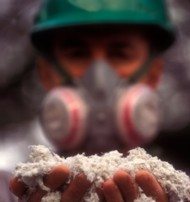Microscopic Mysteries: Asbestos, Ultrafine Particulates, and Mesothelioma

Understanding how tiny particles in the air affect our health is challenging. A new study explores the health effects of asbestos and ultrafine particles. Researchers highlight the need for clearer definitions and better research.
Asbestos is a toxic mineral found naturally throughout the world. Exposure to asbestos can cause mesothelioma, a rare cancer.
Malignant pleural mesothelioma is not very common. This kind of cancer tends to affect older patients more, especially those over 40, and is more common in men. Malignant pleural mesothelioma is caused by exposure to asbestos, a material used in old buildings.
Defining Asbestos and Ultrafine Particulates
Asbestos and ultrafine particles are tiny and can be harmful when breathed in. But, their exact definitions are not clear, which makes studying them difficult. More precise definitions are needed to guide research and rules.
One challenge is that these particles vary in shape, size, and how they affect our bodies. Current ways of categorizing them are helpful but not precise enough. We need better ways to define and understand these particles.
Some studies on these particles have limitations and do not look at all the factors. To fully understand the health effects of asbestos, researchers need to look at all the variables involved.
New research focuses on PM 2.5 particles. These are very small and can give us more insight into the risks of breathing in particles like asbestos.
Taking a Comprehensive Approach
To address the challenges of asbestos, ultrafine particles, and engineered nanoparticles, researchers need a comprehensive approach. This means working together to develop clear definitions and standards for research. By doing so, we can better understand and reduce the risks of breathing in these tiny particles.
Understanding the risks of asbestos and ultrafine particles is an ongoing challenge. By improving our definitions and taking a comprehensive approach to research, we can make progress in protecting respiratory health.
Source:
Fitzgerald, Sean M. “Resolving Asbestos and Ultrafine Particulate Definitions with Carcinogenicity.” Lung Cancer 189 (March 1, 2024): 107478. https://doi.org/10.1016/j.lungcan.2024.107478.





